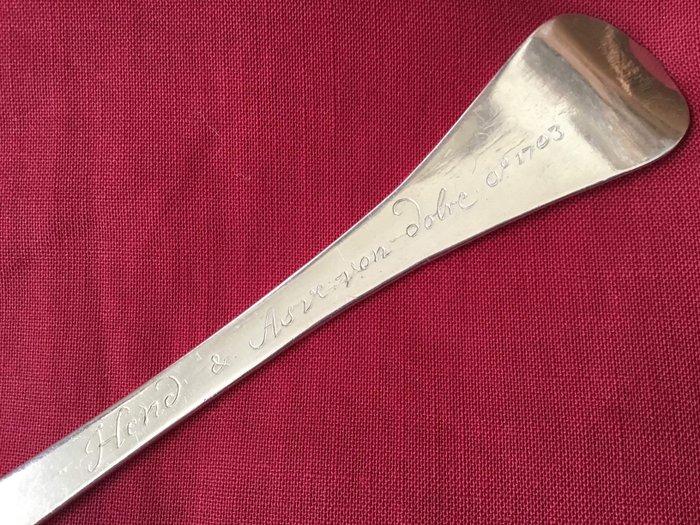
Bijkamp & Visser (Steenwijk), NO RESERVE - Pala para servir tarta - .835 plata - 1963
N.º 25103171

N.º 25103171

Very early silver spoon from the history of the Baltic Sea. Smooth model with flat handle and rat tail under the bowl. Maker Johann Georg Eben, Riga, active 1703-1710. According to Annelore Leistikow (Baltisches Silber 1996) Eben was one of the most famous silversmiths of Riga in his short working life. In 1710 he dies of the plague.
Various engravings: On the back of the stem: Hend & Asve von dolre Ao 1703. On the front of the stem: Grietje Dirks Dr. On the front at the top an image of a boat /sloop and two initials: E.J.B. and W.K. - 44 grams, 20.2 cm. In nice condition.
These type of spoons were often used in the Baltic Sea Shipping as a business gift, so they are referred to as shipbroker or captain spoons. There is some background about this spoon: The name (Freys) Van/Von Dolre frequently appears in Amersfoort, but mostly in Amsterdam, Zaandam and North Holland. Hendrik and Assueres/Asweerus are names that regularly pop up in the family tree of Dolre. In a bill from 1660 from Riga, the name of Dolre also appears. In his third part about “Rusland en de Nederlanden”, Jacob Scheltema describes trading around 1700 in Riga, also with a role for Czar Peter the Great. A certain Henry van Dolre is described here as an important Dutch merchant in Riga. Some colleagues are called Dirk ... Is it to far-fetched to think that the family members of Hendrik and Assueer van Dolre gave this spoon as a present to the daughter of one of them in 1703? In later years, yet another boat and other owners initials are engraved on it.
Cómo comprar en Catawiki
1. Descubre algo especial
2. Haz la puja más alta
3. Paga de manera segura